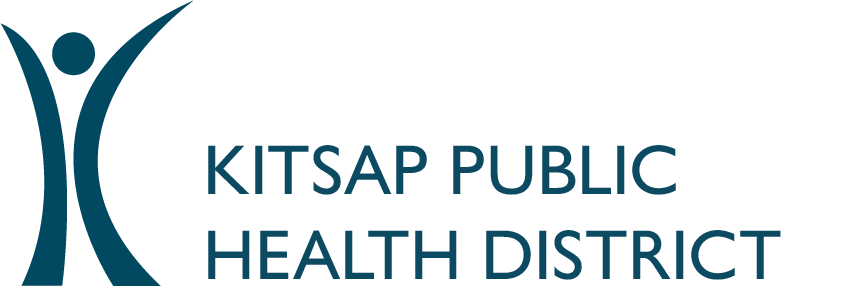
Our vision: A safe and healthy Kitsap County for all.
Drinking Water & Onsite Sewage
Residential Building Clearances
You need a Residential Building Clearance from the Health District if:
You have an existing septic system; and,
Your construction project requires Health District approval in order to obtain your building permit.
You also need a Connection Permit from the Health District if:
Your project includes a new connection to your septic system; or,
Your project includes disconnecting a structure from your septic system and connecting a new structure to your septic system. i.e., replacing a Mobile Home with a new Mobile Home or Stick-Built building.
Notice: Our Septic Regulations Have Been Revised
What You Need to Know About Properties Connected to a Septic System
Thinking about buying or selling a home with a septic system? If so, you should be asking yourself these questions:
-
Do I know where the septic system is located on the property?
-
Do I know what type and size of septic system serves the home?
-
Is the existing septic system legal? Does it have any limitations that I should be aware of before I sell or buy the home?
-
When was the last time the septic system was inspected or pumped-out? Is it working properly?
A septic system is a critical component of a home --- it collects, treats, and disposes of all of the used water from toilets, sinks, tubs, showers, dishwashers, clothes washers, etc. Without a properly working and legal septic system, a home's value to the occupants or potential buyers is severely diminished. Who wants to own a home where you can't flush the toilets, take a shower, or wash your clothes? For more information about how septic systems work and the different types of septic systems see our Homeowner's Guide to Onsite Septic Systems.
Before buying or selling a home, make sure that you know what the status of the septic system is by having the Health District do a records review and site inspection of the septic system, and provide you with a written report of the findings. It is not only a good idea to protect your investment, but it is also the law (Kitsap Public Health Board Ordinance 2008A-01, Section 13.D.).
A Property Conveyance inspection is important to identify significant problems. See Property Conveyance Inspection Findings chart below. If these problems are not identified or corrected, they can cause problems for the home sellers or buyers and even cause septic system failure after the new owners take possession of the property.
For more detailed information, please refer to our Selling a property with a septic system: What, Why & How guide.
If your property does not have a record drawing, you will need to create one. Please follow the instructions contained within the Record Drawing Document.
2023 Property Conveyance Inspection Findings
1510 property conveyance inspections (PCI) for septic were completed in 2023. Of the 1510 inspections, 351 (23%) had significant deficiencies identified.
Avoiding Common Problems on
Property Conveyance Inspections
Maintenance accessibility - For alternative systems, keep components accessible for maintenance.

Encroachment - don’t build or park on your primary or reserve drainfield. Primary and reserve drainfield areas are intended to be maintained clear for maintenance and for future use.

Use beyond capacity/unpermitted connections -
Stay within the designed capacity of your drainfield design. To find out how many bedrooms your septic is approved for, search for your records through our GIS Search.
Do not add plumbing to outbuildings without project review and approval from Kitsap Health.
Primary/reserve areas compromised -
Know where your septic areas are and protect them. For more information about how to protect those areas, review the Homeowner’s Guide
What You Need To Know About Properties Connected to a 1- or 2-party well or a Group B Water System
Effective March 4, 2019, all properties served by a private one- or two-party water supply or a Group B Water System are required to have a Water Status Report prepared by the Health District prior to sale. In the past, these reports have been optional but are now required.
Water Status Report Applications should be submitted 30 days prior to property transfer to allow for any identified issues to be addressed prior to closing.
For more information about the new rules, please view our Water Status Reports - Frequently Asked Questions handout.
Just like a Property Conveyance Inspection is important to know the status of the septic system, it is also important to evaluate the water system to identify significant problems. See the Private Water Status Report Findings and group B Water Status Report Findings charts below. If these problems are not identified or corrected, they can cause problems for the home sellers or buyers.
Avoiding Common Problems on
Private Water Status Reports
Well openings/access for contamination - Openings in the well casing/cap can allow contamination into the well. Ensure conduit, cap and all other entry points are sealed.
Ensure pressure tank maintenance is up to date and sample for bacteria annually. For more information about bacteria sampling, view the handout.

Construction Standards - Keep your well-head above grade and accessible (at least six inches above grade)


2023 Private Water Status Report Findings
377 private water status reports were completed in 2023. Of those 377 reports, 155 (41%) had significant problems identified.
2023 Group B Water Status Report Findings
83 public water status reports for Group B systems were completed in 2023. Of those, 66 (80%) significant problems were identified.
Avoiding Common Problems on Public Water Status Reports
No user agreement - Group B user agreements have been required since 2019. All water systems should review their current user agreement or, if there isn’t one, create one. More resources can be found in below in the Drinking Water Publications Downloads. Look for these documents:
-
Group B Water System User Agreement Requirements
-
Group B Water System User Agreement Information and Resources
No operating permit - Group B water systems must have a current operating permit. Ensure water system contact information is up to date and the permits have been paid. For more information, visit our Managing Group B Public Water Systems page.
Sampling not current - Most Group B water systems must sample annually for bacteria and every three years for nitrate. If you’re unsure of your sampling frequency or need technical assistance with taking samples, please call us at (360) 728-2235 and ask to speak to the Drinking Water Inspector of the Day.
Also, reminder cards are mailed approximately 30 days prior to sample due date. Make sure your system contact information is updated.
Residential Building Clearance Requirements
A Permitted septic system and reserve is required.
A Building Clearance Application must be applied for.
A Site Plan, meeting specific requirements.
The septic system must be up to date with inspections.
Drinking water requirements.
A tank connection permit may be required.
Avoiding Delays
The most common reasons for delayed review or approval are:
Incomplete/inaccurate site plans. Read the site plan requirements carefully. In your records you should find a septic design, which will include property shape and dimensions, and your As-Built or Record of Construction, which will illustrate how your septic system was installed.
Entering the wrong person as the applicant (for online submittals).
Submitting the Building Clearance before the required septic tank pumping is done.
Failing to submit the Connection Permit at the time of Building Clearance submittal (if applicable)
Forgetting to notify the Health District that the septic connection is ready for inspection. When you make the new connection to your septic system, you will need to leave the connection exposed for inspection. You can notify the Health District that your connection is ready for inspection here. Requests submitted before 3:30 p.m. will be inspected within 48 business hours.










.png)
